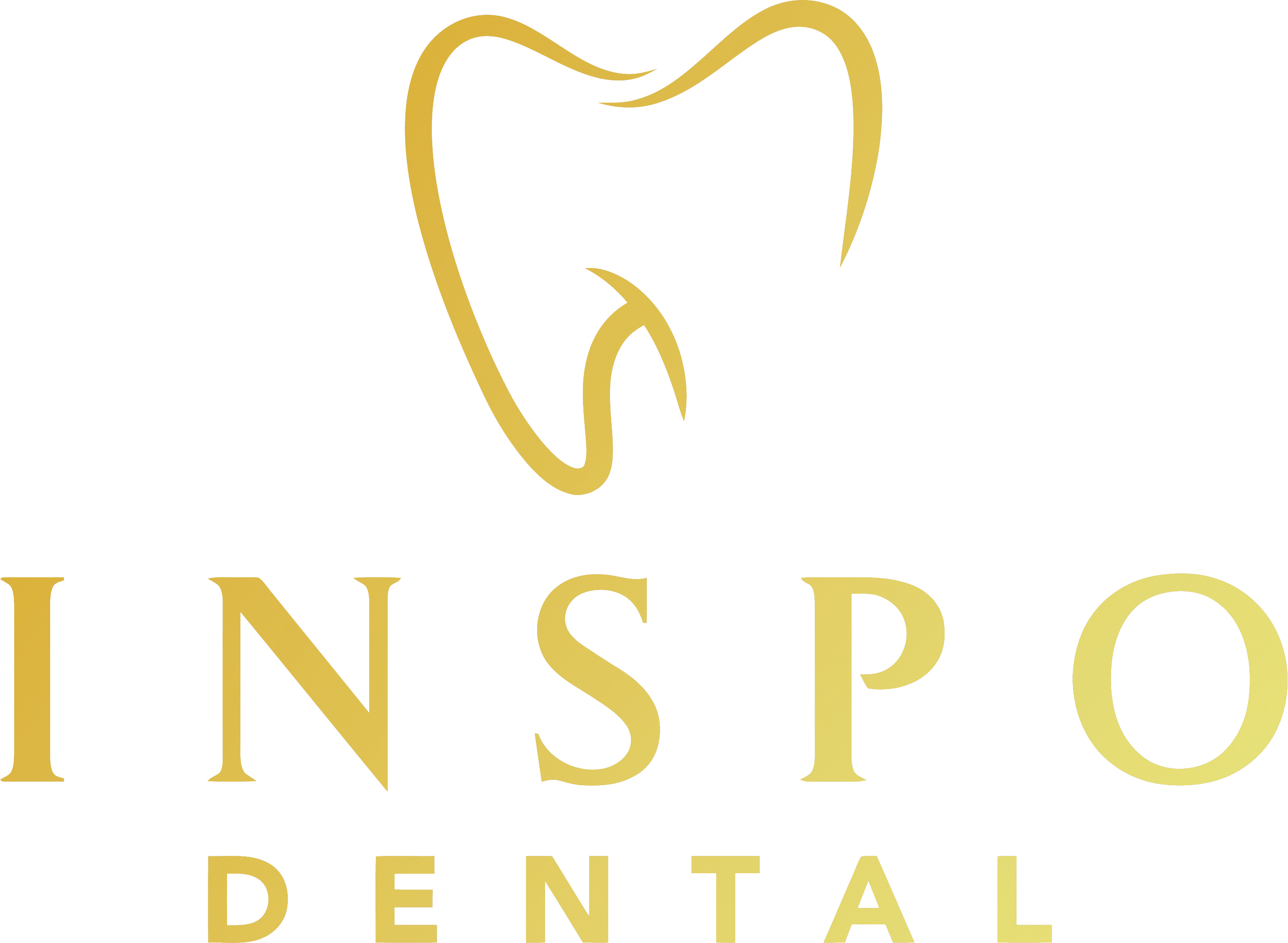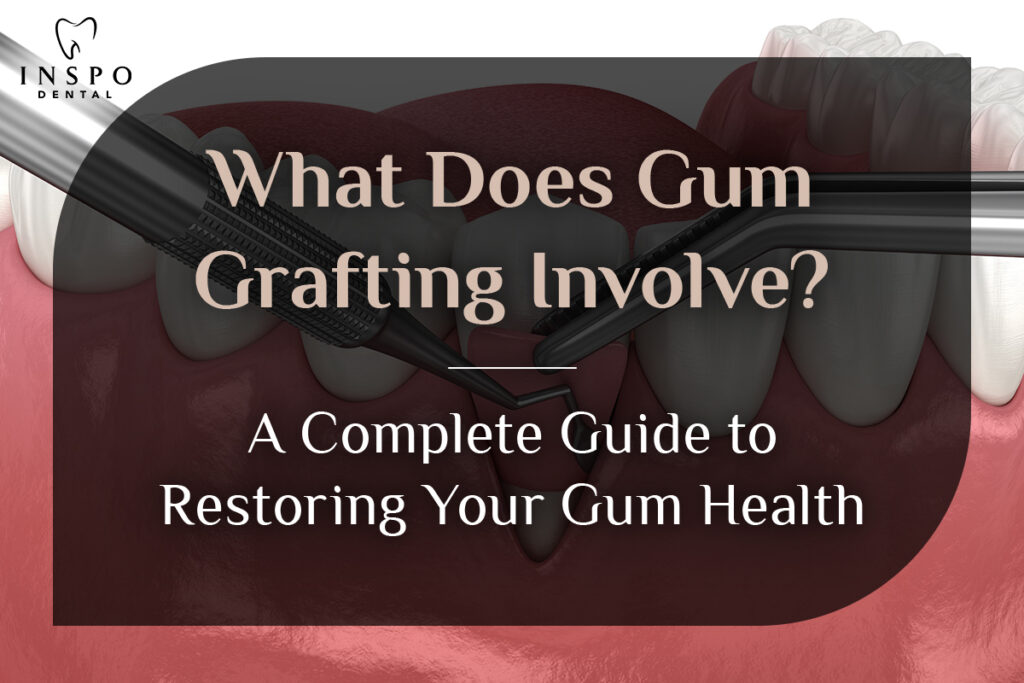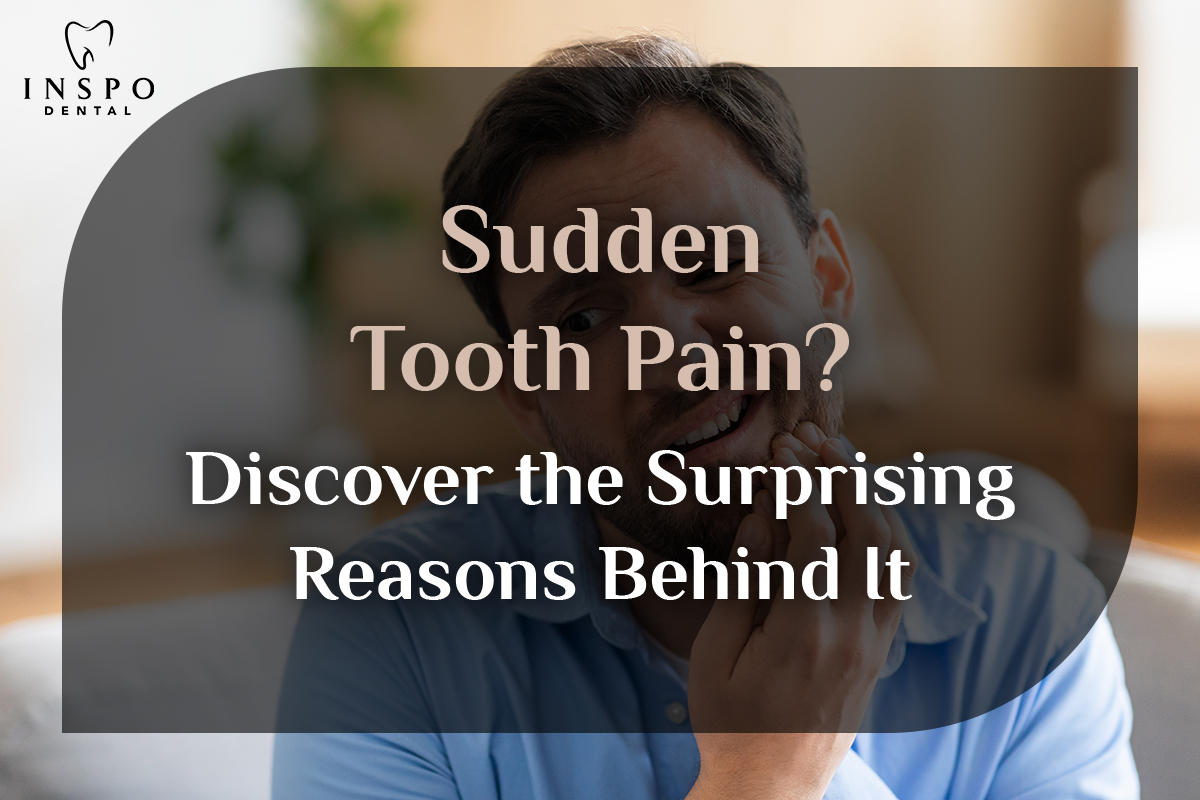Learn what gum grafting involves, why it’s needed, the types of procedures available, and how it helps restore healthy gums and prevent further dental issues. Discover the complete process, recovery tips, and aftercare advice.
 Introduction: Understanding Gum Grafting and Its Importance
Introduction: Understanding Gum Grafting and Its Importance
Your gums play a critical role not only in supporting your teeth but also in maintaining your overall oral health. Unfortunately, gum recession—a condition where your gum tissue wears away or pulls back from the tooth—can expose the roots of your teeth, leading to sensitivity, decay, and even tooth loss.
But here’s the good news: gum grafting is a proven dental procedure that can restore lost gum tissue and help protect your teeth from further damage.
In this comprehensive guide, we will explore what gum grafting involves, why it may be recommended, the various techniques used, and how you can prepare for the procedure. Whether you’re dealing with gum recession or simply exploring preventive options, this article will give you the clarity you need.
 What Causes Gum Recession?
What Causes Gum Recession?
Before we dive into what gum grafting involves, it’s essential to understand why gum recession happens in the first place.
 Common Causes of Gum Recession:
Common Causes of Gum Recession:
 Periodontal (gum) disease – caused by bacterial infections
Periodontal (gum) disease – caused by bacterial infections
 Aggressive tooth brushing – brushing too hard can wear away gum tissue
Aggressive tooth brushing – brushing too hard can wear away gum tissue
 Genetic predisposition – some people naturally have thinner gum tissue
Genetic predisposition – some people naturally have thinner gum tissue
 Hormonal changes – pregnancy, menopause, or hormonal imbalances can increase gum sensitivity
Hormonal changes – pregnancy, menopause, or hormonal imbalances can increase gum sensitivity
 Tobacco use – smoking and chewing tobacco harm gum tissue
Tobacco use – smoking and chewing tobacco harm gum tissue
 Grinding or clenching teeth (bruxism) – puts pressure on the gums and supporting bone
Grinding or clenching teeth (bruxism) – puts pressure on the gums and supporting bone
 Misaligned teeth – cause uneven pressure on the gums
Misaligned teeth – cause uneven pressure on the gums
Important Note: Gum recession is not always easy to notice in the early stages, which is why regular dental checkups are crucial for early detection.
 What Does Gum Grafting Involve? An Overview of the Procedure
What Does Gum Grafting Involve? An Overview of the Procedure
Gum grafting is a dental procedure that involves taking healthy gum tissue from one part of your mouth (or using donor tissue) and attaching it to the area where your gums have receded. The goal is to cover exposed tooth roots, prevent further gum loss, and improve overall gum health.
 Key Goals of Gum Grafting:
Key Goals of Gum Grafting:
 Cover exposed tooth roots
Cover exposed tooth roots
 Reduce tooth sensitivity
Reduce tooth sensitivity
 Prevent future gum recession
Prevent future gum recession
 Improve the aesthetic appearance of your smile
Improve the aesthetic appearance of your smile
 Strengthen gum tissue for better oral health
Strengthen gum tissue for better oral health
Depending on the severity of your gum recession and your dentist’s recommendation, there are several types of gum grafting techniques available.
 Types of Gum Grafting Procedures
Types of Gum Grafting Procedures
Not all gum grafts are the same. The technique your periodontist chooses will depend on the condition of your gums, the extent of the recession, and your personal health factors.
 1. Connective Tissue Graft
1. Connective Tissue Graft
 Most commonly used method
Most commonly used method
 Tissue is taken from the roof of your mouth (palate)
Tissue is taken from the roof of your mouth (palate)
 Inserted under the existing gum tissue near the exposed root
Inserted under the existing gum tissue near the exposed root
 Ideal for covering multiple exposed roots
Ideal for covering multiple exposed roots
 2. Free Gingival Graft
2. Free Gingival Graft
 Also taken from the palate
Also taken from the palate
 Tissue is directly placed onto the area needing treatment
Tissue is directly placed onto the area needing treatment
 Often recommended for patients with thin gums who need additional tissue thickness
Often recommended for patients with thin gums who need additional tissue thickness
 3. Pedicle Graft
3. Pedicle Graft
 Tissue is sourced from gum tissue adjacent to the affected tooth
Tissue is sourced from gum tissue adjacent to the affected tooth
 Flap of tissue is partially cut and repositioned over the exposed root
Flap of tissue is partially cut and repositioned over the exposed root
 Suitable for patients with plenty of gum tissue near the site
Suitable for patients with plenty of gum tissue near the site
 4. Donor Tissue (Allograft)
4. Donor Tissue (Allograft)
 Uses tissue from a human donor or synthetic material
Uses tissue from a human donor or synthetic material
 Eliminates the need for harvesting tissue from your own mouth
Eliminates the need for harvesting tissue from your own mouth
 Reduces discomfort associated with removing tissue from the palate
Reduces discomfort associated with removing tissue from the palate
 How to Know If You Need Gum Grafting
How to Know If You Need Gum Grafting
Your dentist or periodontist will determine whether gum grafting is right for you based on a thorough examination. You might need gum grafting if:
 You have visible gum recession
You have visible gum recession
 Your teeth feel sensitive when exposed to hot or cold
Your teeth feel sensitive when exposed to hot or cold
 You notice that your teeth appear longer than usual
You notice that your teeth appear longer than usual
 You’re diagnosed with moderate to severe gum disease
You’re diagnosed with moderate to severe gum disease
 You’ve experienced bone loss near the gumline
You’ve experienced bone loss near the gumline
Tip: The earlier gum recession is detected, the less invasive the treatment may need to be.
 Step-by-Step Breakdown: What to Expect During Gum Grafting
Step-by-Step Breakdown: What to Expect During Gum Grafting
Knowing what the procedure involves can ease anxiety and help you feel more prepared. Here’s a typical step-by-step process of what gum grafting involves:
1️⃣ Initial Consultation
 Complete oral exam by your dentist or periodontist
Complete oral exam by your dentist or periodontist
 X-rays and measurements of gum recession levels
X-rays and measurements of gum recession levels
 Discussion of the best grafting technique for your situation
Discussion of the best grafting technique for your situation
2️⃣ Treatment Planning
 Explanation of risks, benefits, and alternatives
Explanation of risks, benefits, and alternatives
 Pre-operative instructions, including stopping certain medications if necessary
Pre-operative instructions, including stopping certain medications if necessary
3️⃣ The Procedure
 Local anesthesia or sedation (if needed) for comfort
Local anesthesia or sedation (if needed) for comfort
 Harvesting of tissue from your palate (or use of donor material)
Harvesting of tissue from your palate (or use of donor material)
 Suturing the graft into place at the recession site
Suturing the graft into place at the recession site
 Application of a protective dressing over the area
Application of a protective dressing over the area
4️⃣ Recovery & Follow-Up
 Post-op check-ups to ensure proper healing
Post-op check-ups to ensure proper healing
 Suture removal (if non-dissolving stitches were used)
Suture removal (if non-dissolving stitches were used)
 Monitoring gum integration and tissue growth
Monitoring gum integration and tissue growth
 Recovery Process: What to Expect After Gum Grafting
Recovery Process: What to Expect After Gum Grafting
The recovery period after gum grafting is critical to the success of the procedure. Most patients experience mild discomfort, swelling, and sensitivity for a few days to a week.
 Tips for a Smooth Recovery:
Tips for a Smooth Recovery:
 Eat soft foods like yogurt, eggs, mashed potatoes, and smoothies
Eat soft foods like yogurt, eggs, mashed potatoes, and smoothies
 Avoid hot or spicy foods that may irritate the area
Avoid hot or spicy foods that may irritate the area
 Do not brush or floss directly on the graft site until your dentist advises
Do not brush or floss directly on the graft site until your dentist advises
 Take prescribed pain relievers or antibiotics as directed
Take prescribed pain relievers or antibiotics as directed
 Rinse gently with antibacterial mouthwash (if recommended)
Rinse gently with antibacterial mouthwash (if recommended)
 Avoid smoking or drinking alcohol during healing
Avoid smoking or drinking alcohol during healing
Pro Tip: Follow your dentist’s instructions closely for the best results and to prevent infection.
 Potential Risks and Complications
Potential Risks and Complications
Although gum grafting is generally safe and successful, like any medical procedure, there are risks involved.
 Possible Complications Include:
Possible Complications Include:
 Infection at the graft site
Infection at the graft site
 Bleeding or prolonged swelling
Bleeding or prolonged swelling
 Graft tissue failing to integrate properly
Graft tissue failing to integrate properly
 Persistent tooth sensitivity
Persistent tooth sensitivity
 Uneven gum line or aesthetic dissatisfaction
Uneven gum line or aesthetic dissatisfaction
Reminder: Choosing an experienced periodontist and following aftercare instructions significantly reduce these risks.
 Benefits of Gum Grafting Beyond Recession Treatment
Benefits of Gum Grafting Beyond Recession Treatment
Gum grafting not only treats gum recession but also offers several additional benefits that contribute to your long-term oral health.
 Key Benefits:
Key Benefits:
 Restores your beautiful smile and natural gum line
Restores your beautiful smile and natural gum line
 Protects exposed tooth roots from cavities and sensitivity
Protects exposed tooth roots from cavities and sensitivity
 Strengthens your gum tissue for better overall oral health
Strengthens your gum tissue for better overall oral health
 Prevents bone loss in the jaw caused by untreated gum recession
Prevents bone loss in the jaw caused by untreated gum recession
 Boosts self-confidence by improving your smile aesthetics
Boosts self-confidence by improving your smile aesthetics
 How to Choose the Right Periodontist for Gum Grafting
How to Choose the Right Periodontist for Gum Grafting
Selecting a skilled dental professional for your gum graft procedure is vital to achieving the best outcomes.
 Factors to Consider:
Factors to Consider:
 Board certification in periodontics
Board certification in periodontics
 Proven experience in gum grafting procedures
Proven experience in gum grafting procedures
 Positive patient reviews and testimonials
Positive patient reviews and testimonials
 Clear communication about the procedure, risks, and recovery
Clear communication about the procedure, risks, and recovery
 Access to modern technologies like laser-assisted gum treatments
Access to modern technologies like laser-assisted gum treatments
Bonus Tip: Don’t hesitate to ask for before-and-after photos of previous gum graft patients treated by the provider.
 Alternative Treatments to Gum Grafting
Alternative Treatments to Gum Grafting
While gum grafting is often the best choice for severe recession, some alternatives may be considered depending on the extent of tissue loss:
 Pinhole Surgical Technique (PST)
Pinhole Surgical Technique (PST)
 Minimally invasive
Minimally invasive
 Small holes made in the gum tissue to reposition it without grafting
Small holes made in the gum tissue to reposition it without grafting
 Faster healing time compared to traditional grafts
Faster healing time compared to traditional grafts
 Guided Tissue Regeneration (GTR)
Guided Tissue Regeneration (GTR)
 Encourages your body to regenerate lost gum and bone tissue
Encourages your body to regenerate lost gum and bone tissue
 Often combined with bone grafting for severe periodontal cases
Often combined with bone grafting for severe periodontal cases
Your dentist will discuss these options if they are appropriate for your condition.
 Long-Term Care After Gum Grafting
Long-Term Care After Gum Grafting
Proper maintenance after your gum grafting procedure is essential for long-term success.
 Essential Oral Care Habits:
Essential Oral Care Habits:
 Use a soft-bristled toothbrush to avoid damaging the gum tissue
Use a soft-bristled toothbrush to avoid damaging the gum tissue
 Follow proper brushing and flossing techniques
Follow proper brushing and flossing techniques
 Schedule regular dental checkups every six months
Schedule regular dental checkups every six months
 Continue professional cleanings to prevent future gum disease
Continue professional cleanings to prevent future gum disease
 Maintain a healthy, balanced diet to support tissue healing
Maintain a healthy, balanced diet to support tissue healing
Pro Tip: Avoid aggressive dental care products like hard toothbrushes or abrasive toothpaste that can irritate sensitive gums.
 Psychological Impact of Gum Recession and How Grafting Can Help
Psychological Impact of Gum Recession and How Grafting Can Help
When people think of dental health, they often focus on physical discomfort like pain or sensitivity. However, the emotional and psychological effects of gum recession can be just as significant.
 Emotional Consequences of Gum Issues:
Emotional Consequences of Gum Issues:
 Self-consciousness about smiling
Self-consciousness about smiling
 Avoidance of social situations due to fear of judgment
Avoidance of social situations due to fear of judgment
 Anxiety related to appearance or dental procedures
Anxiety related to appearance or dental procedures
 Decreased self-esteem caused by noticeable gum recession or tooth sensitivity
Decreased self-esteem caused by noticeable gum recession or tooth sensitivity
Gum grafting doesn’t just repair physical damage—it also helps restore confidence. Patients frequently report feeling happier, more comfortable smiling, and more at ease in social settings after undergoing successful gum grafting.
Remember: A healthy smile isn’t just about teeth—it’s about how you feel about yourself.
 Myths and Misconceptions About Gum Grafting
Myths and Misconceptions About Gum Grafting
Many patients hesitate to pursue gum grafting because of common myths circulating around the procedure. Let’s set the record straight.
 Myth vs. Fact:
Myth vs. Fact:
|
Myth
|
Fact
|
|
Gum grafting is extremely painful
|
Modern techniques and anesthesia make it very manageable with minimal discomfort.
|
|
Only older adults need gum grafts
|
Gum recession can happen at any age—even teenagers may need treatment.
|
|
Recovery takes months
|
Most people return to normal activities within a week or two.
|
|
Gum grafting is only cosmetic
|
While it improves appearance, its primary purpose is to protect your teeth and health.
|
|
All gum grafts are the same
|
There are multiple grafting options tailored to individual needs.
|
 Frequently Asked Questions (FAQ) About Gum Grafting
Frequently Asked Questions (FAQ) About Gum Grafting
 How long does gum grafting take?
How long does gum grafting take?
Most gum grafting procedures are completed in 1 to 2 hours, depending on the extent of treatment. Your dentist will provide an estimated time during the consultation.
 Is gum grafting painful?
Is gum grafting painful?
 No. Thanks to local anesthesia and optional sedation, the procedure is typically comfortable. Post-operative discomfort is usually mild and managed easily with pain relievers.
No. Thanks to local anesthesia and optional sedation, the procedure is typically comfortable. Post-operative discomfort is usually mild and managed easily with pain relievers.
 How soon can I eat normally after gum grafting?
How soon can I eat normally after gum grafting?
Soft foods are recommended for the first 7 to 10 days. Gradual reintroduction of solid foods happens after your periodontist confirms proper healing.
 Can gum recession return after a graft?
Can gum recession return after a graft?
Yes, if proper oral care is not maintained, gum recession may occur again. Preventive care and regular dental checkups are crucial to long-term success.
 Will insurance cover gum grafting?
Will insurance cover gum grafting?
Some dental insurance plans may cover gum grafting if it’s deemed medically necessary (not purely cosmetic). Always check with your insurance provider.
 Scientific Advances in Gum Regeneration Techniques
Scientific Advances in Gum Regeneration Techniques
The field of periodontal care is continually evolving. New research and innovations are offering less invasive options and better outcomes.
 Cutting-Edge Developments:
Cutting-Edge Developments:
 Growth Factor Therapy: Uses proteins like platelet-derived growth factors (PDGF) to stimulate faster healing and tissue regeneration.
Growth Factor Therapy: Uses proteins like platelet-derived growth factors (PDGF) to stimulate faster healing and tissue regeneration.
 Tissue Engineering: Combines biological scaffolds and stem cells to promote gum tissue growth.
Tissue Engineering: Combines biological scaffolds and stem cells to promote gum tissue growth.
 Laser-Assisted Grafting: Minimizes discomfort and reduces healing time by using laser technology instead of traditional surgical tools.
Laser-Assisted Grafting: Minimizes discomfort and reduces healing time by using laser technology instead of traditional surgical tools.
 3D-Printed Graft Scaffolds: Experimental use of 3D technology to create precise graft templates for personalized treatment.
3D-Printed Graft Scaffolds: Experimental use of 3D technology to create precise graft templates for personalized treatment.
Exciting Insight: These scientific breakthroughs are transforming gum grafting into a less invasive, faster-healing experience.
 Nutritional Support for Gum Health and Post-Graft Recovery
Nutritional Support for Gum Health and Post-Graft Recovery
Nutrition plays a critical role not only in your overall health but also in the healing process after gum grafting. Eating the right foods can speed up recovery and strengthen your gums.
 Best Foods for Healing and Gum Strength:
Best Foods for Healing and Gum Strength:
 Vitamin C-rich foods like oranges, bell peppers, and strawberries
Vitamin C-rich foods like oranges, bell peppers, and strawberries
 Omega-3 fatty acids from flaxseeds, chia seeds, and walnuts
Omega-3 fatty acids from flaxseeds, chia seeds, and walnuts
 Soft protein sources like scrambled eggs, tofu, and yogurt
Soft protein sources like scrambled eggs, tofu, and yogurt
 Hydrating foods like cucumbers, watermelon, and smoothies
Hydrating foods like cucumbers, watermelon, and smoothies
 Zinc-rich foods like pumpkin seeds and chickpeas to aid healing
Zinc-rich foods like pumpkin seeds and chickpeas to aid healing
Pro Tip: Stay well-hydrated and avoid hard, crunchy, or spicy foods until your gums fully heal.
 How Gum Health Impacts Whole-Body Wellness
How Gum Health Impacts Whole-Body Wellness
Gum health is not an isolated issue—it is connected to your entire body. Chronic gum disease and recession may increase risks for other health conditions.
 Gum Disease Is Linked To:
Gum Disease Is Linked To:
 Heart disease and stroke
Heart disease and stroke
 Diabetes complications
Diabetes complications
 Respiratory infections
Respiratory infections
 Pregnancy complications like premature birth or low birth weight
Pregnancy complications like premature birth or low birth weight
 Rheumatoid arthritis flare-ups
Rheumatoid arthritis flare-ups
Healthy gums are part of your whole-body wellness plan—and gum grafting plays an essential role in restoring this balance when gum tissue is compromised.
 Cosmetic Benefits of Gum Grafting: Beyond Health
Cosmetic Benefits of Gum Grafting: Beyond Health
While the primary reason for gum grafting is often medical, the cosmetic improvements are undeniable. A healthy, even gum line can significantly enhance the overall appearance of your smile.
 Aesthetic Advantages:
Aesthetic Advantages:
 Corrects the appearance of “long teeth” caused by recession
Corrects the appearance of “long teeth” caused by recession
 Creates a balanced, symmetrical gum line
Creates a balanced, symmetrical gum line
 Enhances the visual harmony between teeth and gums
Enhances the visual harmony between teeth and gums
 Supports whiter teeth appearance by covering darker root surfaces
Supports whiter teeth appearance by covering darker root surfaces
 When Should You Avoid Gum Grafting?
When Should You Avoid Gum Grafting?
Although gum grafting is safe for most patients, certain conditions may delay or contraindicate the procedure.
 Situations Where Gum Grafting May Be Postponed:
Situations Where Gum Grafting May Be Postponed:
 Active periodontal infections or untreated gum disease
Active periodontal infections or untreated gum disease
 Poor oral hygiene or non-compliance with aftercare instructions
Poor oral hygiene or non-compliance with aftercare instructions
 Uncontrolled diabetes or systemic health issues that affect healing
Uncontrolled diabetes or systemic health issues that affect healing
 Smoking or tobacco use (patients are advised to quit before surgery)
Smoking or tobacco use (patients are advised to quit before surgery)
 Pregnancy (depending on the trimester and overall health)
Pregnancy (depending on the trimester and overall health)
Your periodontist will evaluate your overall health status before proceeding with treatment.
 How Technology Has Improved Patient Experience in Gum Grafting
How Technology Has Improved Patient Experience in Gum Grafting
Modern dental technology has made gum grafting safer, faster, and more comfortable than ever before.
 Innovations That Enhance the Process:
Innovations That Enhance the Process:
 Digital Imaging & Intraoral Scanners for precise planning
Digital Imaging & Intraoral Scanners for precise planning
 Cone Beam CT Scans to assess bone structure and gum thickness
Cone Beam CT Scans to assess bone structure and gum thickness
 Surgical Microscopes for greater precision during tissue placement
Surgical Microscopes for greater precision during tissue placement
 Low-level Laser Therapy (LLLT) for faster healing and reduced inflammation
Low-level Laser Therapy (LLLT) for faster healing and reduced inflammation
These technologies ensure that each procedure is custom-tailored for maximum effectiveness and patient comfort.
 Preparing Emotionally and Practically for Gum Grafting
Preparing Emotionally and Practically for Gum Grafting
Facing any dental procedure can feel daunting—but preparation makes a significant difference.
 Mental and Practical Preparation Tips:
Mental and Practical Preparation Tips:
 Ask questions and express concerns openly with your periodontist
Ask questions and express concerns openly with your periodontist
 Arrange for someone to drive you home if sedation is used
Arrange for someone to drive you home if sedation is used
 Prepare your home with soft foods and oral care supplies
Prepare your home with soft foods and oral care supplies
 Plan to rest for at least a day or two post-surgery
Plan to rest for at least a day or two post-surgery
 Focus on relaxation techniques like deep breathing or meditation to reduce anxiety
Focus on relaxation techniques like deep breathing or meditation to reduce anxiety
 Red Flags: When to Call Your Dentist After Gum Grafting
Red Flags: When to Call Your Dentist After Gum Grafting
Knowing when to seek help after your gum grafting procedure ensures early intervention if complications arise.
 Contact Your Dentist Immediately If You Experience:
Contact Your Dentist Immediately If You Experience:
 Excessive bleeding that doesn’t stop
Excessive bleeding that doesn’t stop
 Severe or worsening swelling after 3 days
Severe or worsening swelling after 3 days
 Signs of infection (fever, pus, unusual odor)
Signs of infection (fever, pus, unusual odor)
 Persistent pain not relieved by prescribed medication
Persistent pain not relieved by prescribed medication
 Graft tissue that appears loose or discolored
Graft tissue that appears loose or discolored
Always follow your provider’s post-operative guidelines to ensure safe healing.
 Pre-Grafting Evaluation: How Dentists Assess Your Suitability for the Procedure
Pre-Grafting Evaluation: How Dentists Assess Your Suitability for the Procedure
Every successful gum graft starts with a thorough evaluation by a dental professional. This initial assessment is critical to determine the most effective treatment plan and ensure the best possible outcome.
 What Happens During the Pre-Grafting Assessment?
What Happens During the Pre-Grafting Assessment?
 Full dental examination with measurement of gum recession levels
Full dental examination with measurement of gum recession levels
 Review of medical history, including chronic conditions like diabetes or heart disease
Review of medical history, including chronic conditions like diabetes or heart disease
 Evaluation of bone support around the teeth through digital X-rays or 3D imaging
Evaluation of bone support around the teeth through digital X-rays or 3D imaging
 Discussion about lifestyle factors like smoking or medication use that may affect healing
Discussion about lifestyle factors like smoking or medication use that may affect healing
 Creation of a custom treatment plan including graft type, anesthesia options, and recovery timeline
Creation of a custom treatment plan including graft type, anesthesia options, and recovery timeline
Pro Insight: Being transparent about your health history helps your periodontist choose the safest and most effective approach for your grafting procedure.
 Conclusion: Restoring Confidence and Oral Health Through Gum Grafting
Conclusion: Restoring Confidence and Oral Health Through Gum Grafting
If you’re struggling with gum recession, tooth sensitivity, or an uneven gum line, gum grafting could be the ideal solution to restore both your oral health and your smile. Understanding what gum grafting involves empowers you to make informed decisions about your treatment.
By partnering with an experienced periodontist and following a structured aftercare plan, you can expect successful results that last for years.
 Protect your teeth from further damage
Protect your teeth from further damage
 Enhance the health and appearance of your gums
Enhance the health and appearance of your gums
 Reduce sensitivity and improve comfort
Reduce sensitivity and improve comfort
 Have questions about gum grafting or want to know if you’re a candidate? Schedule a consultation with your periodontist today and take the first step toward a healthier smile!
Have questions about gum grafting or want to know if you’re a candidate? Schedule a consultation with your periodontist today and take the first step toward a healthier smile!
























































































































































































